Design Transitions - author interview

With its obsession with creating the new and improving the old, design is naturally a field that is in constant flux. In the past decade, design has been grappling with its identity somewhat. Whilst traditional skills are still important, increasingly sub- or uber-disciplines such as design thinking, service design and strategic design have marked a significant shift in the roles designers and their clients and partners play on projects. Design Transitions documents this flux, by presenting 42 unique and insightful stories of how design is changing around the world. After a foreword by IDEO CEO Tim Brown, twelve countries are represented from the perspectives of three different communities: design agencies, organisations embedding design; and design academics. These three communities are divided across the three sections of the book:
Changing Practices - 25 stories from design practices in a range of disciplines.
New Territories - five organisations introducing and embedding design approaches into their core practice and operations.
Viewpoints - 12 interviews with leading design academics, offering additional insights and a critical perspective on the key themes that have emerged from our case studies and interviews.
The Designer’s Review of Books Editor, Andy Polaine, interviewed the three authors of the book, Joyce Yee, Emma Jefferies and Lauren Tan.
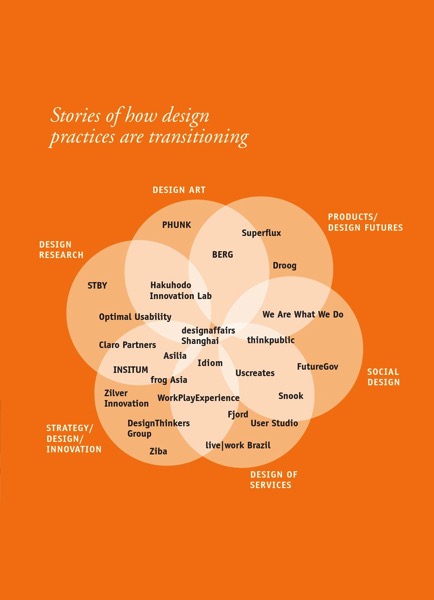
AP: You write about the method and approach of the book in the introduction, but what was the impetus for it? What made you feel there was something to be examined and written about?
Joyce: The actual impetus really started from Emma’s Design Walkabout tour where she hoped to work with a number of innovative practices located around the world to learn and experience design in different contexts. When she shared her plans, I felt there was a perfect opportunity to use her visits to find out a bit more about the why, how and what of these international practices. These were questions that had been bubbling for a while in my conversations with Emma about design. Having ‘studied’ the subject through our research and experienced it through our own professional practice, we were acutely aware that design has changed a great deal since we first started out in our design careers and we wanted to capture those changes. Ultimately, for me, curiosity that was the main driver. I wanted to know what these interesting and innovative designers are doing and how they are doing it. Writing a book was the perfect excuse to talk to these people.
Emma: I’ve always loved the idea of designers being part of a guild of nomads, learning their craft by moving from place to place, and studying with different masters. I always knew that if I did a Walkabout to learn from some of these different masters myself, I did not want to do it just for my own sake - there had to be a bigger purpose. There would be many stories for me to share about my experiences, I was sure of this - but I was not sure of the right way to go about sharing them. After I had completed my PhD I took a trip to London, where I came across different design companies and realised their practices were always in transition: change was a constant for them. I shared this observation with Joyce and she suggested that if I was going to do an International Design Walkabout, we should collaborate to write a book. Although I was unsure of how, or if, we could capture the way design is changing, I knew that a book on this topic would be extremely valuable to the design industry. We also both knew that this would be a huge task to achieve, and so we brought our good friend Lauren Tan on board in order to make it happen.
Lauren: I wrote my PhD on the different and changing role of the designer. The idea of transition and change could not have been more poignant for the design industry at the time of researching and writing our book. We try to capture and then distill what is happening and where this could be leading design in the future. These are important questions for our discipline and for the industry. The opportunity to also have a conversation and profile designers and design companies doing things at the forefront of design practice was, and still is, something I am very interested in and passionate about.
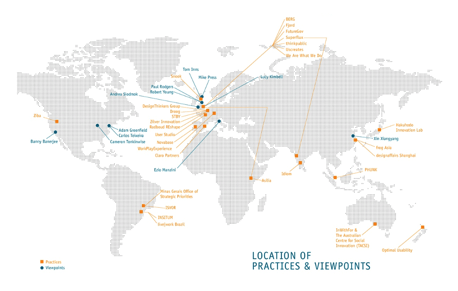
AP: How did you go about selecting the studios and practitioners featured in the book?
Joyce: It was a mixture of drawing from our own resources and knowledge and leveraging the knowledge of the community. We were very conscious of wanting to feature untold stories - so while we recognised the importance of having established and well-known practices in the book, we also wanted to seek out smaller, lesser-known practices. We also wanted a good mix of representation from around the world, because we recognise that design is valued differently in different contexts and countries. We also wanted to feature a mix of design disciplines to ensure we cover the transitions happening in the different sectors. Once we agreed on these basic principles, we drew up a rough criteria list and started building a shortlist of practices to approach.
Emma: Yes, we started out by engaging the design community to help us build our list - we sent out a request through our social media network asking ‘Which design companies inspire you?'. As a result we collected a list of over 100 practices to review. As I set off on my walkabout I hoped to uncover untold stories of how design is changing in the emerging markets as their economies change. I was not disappointed - while hosting design thinking talks in supermarkets and workshops throughout Brazil I met many people with inspirational stories to tell. For example, the Minas government who are developing their own design process, and Fiat who are being supported by ISVOR to help bring design into the DNA of their business.
Lauren: It was tough to edit down our long list to just a selected few. In our book we profile design companies as full case studies and as snapshots. The snapshots were a way to help us accommodate many more design practices in our book.
AP: How did you manage the writing process together? (I’m intrigued by how other people do this–I wrote a post about our approach)
Joyce: We divided up the tasks fairly equally. Each of us had our own contacts through our various networks, which we followed up. We had all of our interviews transcribed and then used the transcriptions as the basis for writing up a case study. Usually the person who did the interview was tasked with writing up the case study - this made the most sense, since that person would have a better understanding of the conversations that took place and would be able to best interpret what was said. Prior to starting the writing, we discussed and agreed on some basic editing principles. From the outset we wanted our book to really reflect the designer’s voice in the pieces, so where possible, we tried to keep the ‘voice’ of the practice/person in the case study and not to objectify the conversation too much. We hope it’s fairly obvious to our readers that this was an intentional editorial decision. Once we drafted up the case study (which was reviewed by at least one other author), it was then sent back to the person who was interviewed, to be reviewed and approved formally. At this stage there could be a few drafts going back and forth in order to clarify the narrative, or to reframe our interpretation.
Emma: Additionally, we wanted the book’s audience to include educators and practitioners, so it was important to us that we make the text accessible and simple by leaving our academic voices behind.
Lauren: This is an interesting question. I live in Australia and Joyce and Emma are based in the UK. Joyce project managed the process of researching and writing the book and her dedication to this management is something that I am still in awe of. Emma was very much ‘out there’ identifying and meeting designers and design companies on her Walkabout and attempting to interview them in person as we did many interviews over Skype. I felt my role came very much in the editing of the case studies - putting together these wonderful stories, drawing out the key insights and keeping that voice of the designer in the text. The latter is something I strived to do in my PhD. So I got the flex that same muscle with the book. I really believe that there is a role to help designers spread their voices for what they have done and can potentially do.
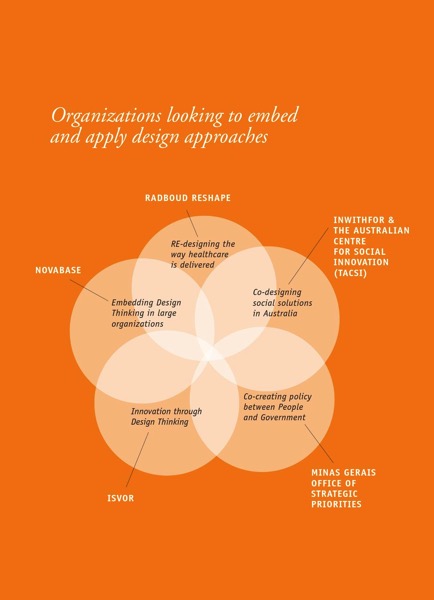
AP: You have grouped the book into three sections: Changing Practices, New Territories and Viewpoints. The Viewpoints section is obviously the easiest one to categorise, since they are longer interviews, but how and why did you decide to categorise the other sections? Was it tricky to find clear categories or did obvious trends emerge?
Joyce: When we made our shortlist of companies we wanted to talk to, it included not only practices that considered themselves to be ‘design-led’ but also practices that were looking to adopt design-led approaches in the way they work. We felt that it was important to include these organisations, even if they did not necessarily fit into our central thesis of ‘how a designer’s practice is changing’. In reality, as Emma and Lauren mention below, the shape and content of the New Territories section emerged during the research for the book. We also felt that showcasing these examples would offer evidence of where and how the discipline is expanding, and how non-designers are appropriating its practices, tools and approaches.
Thinking more strategically, we hoped that by featuring non-design practices we would also widen the audience for the book. We were not particularly interested in writing a book that was just for designers and the design community - we are interested in the role of design in a wider scope. It felt simpler for us to group the practices that were considered to be ‘design-led’ in the Changing Practices section, and the non-design led organisations in the New Territories section. The reason we named it New Territories was because we felt that these were new territories for design to operate in.
Emma: The New Territories section actually emerged during the writing of the book. As my Walkabout took me through both developed and emerging markets, I saw so much interest from both designers and business professionals as to how design was changing and merging with other sectors. To be honest I think we’ve only just skimmed the surface in this section - for example, when I was delivering a talk at WeSchool in India I learnt about how they are taking a design thinking approach to teaching management. I’m sure that many other educational fields are also starting to embed design within their curriculum, or merge design with other sectors - such as Jon Kolko, who founded the Austin Center for Design where they are teaching interaction design along with social entrepreneurship. I hope to explore this area more in the future.
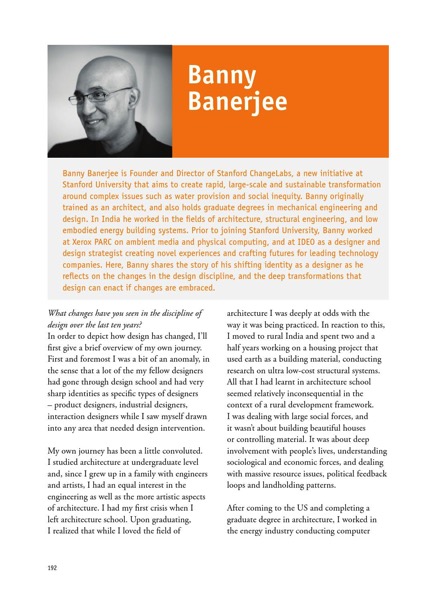
Lauren: As Emma has said, New Territories was a section of the book that emerged largely during the research process. It was of special interest to us to see this different engagement model used by client or non-design organisations and designers. We had many questions for how design practice was being played out in such a context and we captured so many great insights by pursuing New Territories.
Changing Practices is obviously the focal point of the original intention of the book - to look at how design practice is changing. Viewpoints was an equally important section that asked academics and commentators to share general observations and paint a broad overview of the design discipline and industry to identify its current position and help signpost the future.
AP: One problem that every book documenting studios working in the mode of a particular trend or movement is that every can end up saying the same thing (e.g., co-designing with our clients/customers, focus on human-centred design, social design, etc.). What are your thoughts on this with regards to Design Transitions?
Joyce: Yes, there was certainly a danger that everyone we spoke to could have come back to us saying the same things - and trends did emerge throughout the case studies. However, to us what’s really important is to put these trends or movements into context. We did not have strong ideas of what would come out of the interviews, and we certainly did not want to predict what might be said.
What was more interesting was to find out how these designers work, transform and reinvent themselves in response to external forces. It’s inevitable that design becomes increasingly about co-designing, user-centredness and so on, due to the fact that the expanded territories design is now operating within require much deeper engagement with people’s needs and motivations. This is not a bad thing, in fact it’s a much needed focus. The key difference in how we curated these stories was in how we situated trends within the different contexts. For example, in an emerging market like India (which is very entrepreneurial) and in the example of the DREAM:IN project, they are leveraging these insights to generate new business ideas.
In Japan, which is recovering from a 10-year economic slump, it is about trying to innovate outside of a rigid social and political hierarchy that is slowly losing credibility. It’s these different contexts that makes the stories within Design Transitions really interesting.
Emma: In addition, we think that we could not have produced this book in the 1990s or the start of the 2000s, as at that time design was only really moving in one direction - towards the digital. When we started Design Transitions in 2011, we were confident that design was now moving in many directions across the globe and that whatever was revealed through the stories we captured, be they differences or common themes, they would be of real value to industry. In fact, one thing that people have told us they gained from reading the book was help to reflect upon their journey, and feel that they are not alone.
Lauren: Our aim to draw out the voice of the designer or design practice through the writing has hopefully conveyed the genuine personalities of the people we interviewed. Even if they did use similar language or token phases, the combination of their context, clients, projects, brand and individual and organisational personalities hopefully made each story unique.
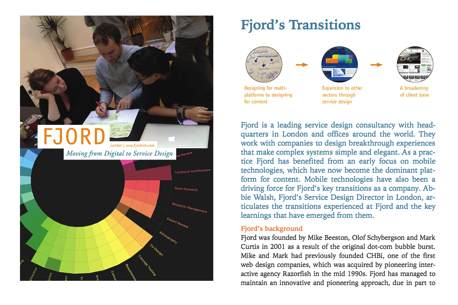
AP: The book discusses this sense of transition that the title draws upon, but what is your sense of where design will end up? Is there an end destination?
Joyce: The obvious answer to this question is ‘I don’t know!’ Of course we all have our own individual sense, but it’s more out of blind optimism than any informed view. I would like to think that individuals equipped with a design toolkit and mindset have the ability to adapt and respond to changing conditions.
In the shorter term there will be a greater proliferation of different ‘types’ of design and designers, and I would hope that the public discourse about design will also move towards a balance in bringing these types of design to the surface. So yes, we still will talk about chairs, and designers will continue to design chairs (a few less, I hope!) - but the general discourse should be more about the role of design in these new areas, such as in service design, social innovation projects and organisational change.
Emma: Joyce and I recently ran a workshop with IXDA Oslo to kick-start their redesign of the User Experience educational pathway in Norway. While we were there we visited a design museum which had, just, too many chairs! Chairs from the last 100 years. I don’t know what the future of design will be, but I wonder what the future design museums and magazines will look like. I hope they will feature the people that are developing design practices in new sectors. More and more people are reaching out to me to help them transition into design.
One recent conversation I had was with a surgeon from Brazil, who is now studying design in Milan. People thought she was crazy to make this move, but her goal was to find new ways to help doctors improve conditions for their patients and themselves - and she saw design as the way to do this. I’m looking forward to seeing what she achieves, and the many others like her who are starting out with a core purpose and want to break the cycle of continuing ‘business as usual’.
Lauren: I think it is important to note that our book helps signpost what the future of design could look like. It doesn’t tell us exactly what this future will be because design operates in context, and the context of each country, each location, is so different and because of this the interpretation and progress of design is going to vary globally. Having lived between the UK and Australia, there is a difference in how design is perceived, valued, procured and used. There are many similarities, but also many differences. The future of design will most likely play out quite differently depending on where you are living and working in the world.
AP: Do you have a particular studio, interview or experience that was a favourite or standout experience in the book?
Joyce: My favourite interviews were probably when we spoke to Hakuhodo Innovation Lab and Droog, for very different reasons. We did not really know much about innovative practices coming out of Japan, so when we spoke with HIL it was really interesting to find out about the type of work they have been involved in for a number of years. It gave me a really good insight into the concerns of Japanese society at the time, such as responding to the Fukushima radiation leak, and it was exciting to discover the social innovation projects that are emerging as a result of their recent economic decline.
I was also really challenged by the Droog story, simply because they are a well-known practice/entity and it was difficult to find a fresh angle from which to tell their story. After a number of attempts, and with the support of Agata (who we interviewed), we managed to ‘get’ how they have transitioned and translate that understanding into a compelling story.
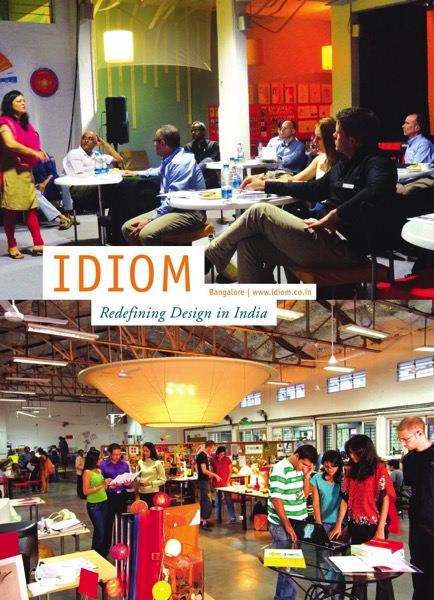
Emma: A stand-out studio for me would have to be IDIOM; their start-up organisation DREAM:IN is now capturing the dreams of youth and turning them into business using design. The DREAM:IN system redesigns the venture capitalist model, merging social innovation and business together - it succeeds by promoting its purpose, rather than trying to sell the ‘idea’ of design. DREAM:IN’s core purpose is to solve India’s unemployment, as by 2020 there will be 47 million young people in India who are unemployed.
Another of my key experiences was visiting a Brazilian jail with the Minas Government. I was there to observe the outcome of the government workers’ design process, which they had developed in order to bring people into co-creating public services and policy. While walking around the rehabilitation project in the jail I learned how their first priority is saving money, followed by the creation of social value. The Government design workshops had to provide a strong case for co-creation by the next change of government. Although each design project the governmental workers delivered was viewed as a prototype, in government failure is not an option. This experience made me realise how different the governmental context is from design culture - but I also saw that this would be a place where design students find themselves working in the future. Anyone that is looking to bring the business and social needs closer together is taking on a huge responsibility and challenge.
Lauren: I didn’t have a favourite studio or interview because I enjoyed working on all of them. I have to say though, when I read through our snapshots these days, I always wish we could have given each one as much space and attention as the case studies.
I love all the photos we have throughout the book of the design practices. I think these are so important for our audience because designers and design practices have such a distinct culture. I felt the photos really brought the words to life. The photos are also great for those in our audience that just don’t have the time to read all the text. It means they can still engage and get a sense of the culture of design through viewing the environments for which design practice exists.
In terms of a standout experience, Joyce made a prototype of the book in the early days. She showed it to me when I was on holiday in the UK and I asked her if I could take it back with me to Australia. She was so reluctant for me to take the copy she had as it was not perfectly glued together double-sided, and the book pages were simply folded into each other to create the book format. But I loved it, carried it with me almost everywhere and I showed it to as many people as I could back in Australia and when I travelled to New Zealand. Everyone who encountered the prototype book loved it. They touched it, flipped through it, engaged with the content and gave open feedback. I thought it was a wonderful way to share the progress of our book with others and people’s enthusiasm was a huge motivation to complete the book as soon as possible. I still have the prototype book. I don’t think I’d ever throw it out!
AP: Putting a book together inevitably requires leaving things out. Your book is about transition, which presumably means things have already moved in some direction since you had to lock down the manuscript. What would you like to change or add and what direction do you see the transition going in now?
Joyce: There are many new and interesting practices or people that we wanted to include but could not, for a number of reasons - so yes, the book was always going to a snapshot in time. We were acutely aware of this, which is why we have always maintained that it’s not meant to be a definitive or complete survey of the current state of design. I think if we were to work on Design Transitions V2, it would have to add to and expand upon the discussions and themes that emerged during the writing of this first book. We already know that we would not write a Design Transitions V2 that simple featured the practices and voices that didn’t make it into the first book. We have a few ideas floating around, but I think it’s most likely that the next book will look to expand on the second section - the New Territories section, where we are interested in exploring how design is being used, embedded or adapted in different sectors such as education, healthcare, government policy and finance.
Emma: The New Territories are where we will see design mature, but under new constraints. Expanding on the New Territories section, we could explore how each sector is using design for different reasons. It would be particularly interesting to capture the failures that have happened when trying to merge design and another sector together. For any creative team, being able to work in a different sector does not happen overnight - and the sector worker does not necessarily know the best way to frame the use of design skills in their own context. It will take time, but learning happens fastest through failure. If we were to do a follow up book we would need to capture the sectors as well as the individual designer’s voice - what were their goals, the constraints they faced and the key learnings that took place.
Lauren: We have had some feedback on the book from our peers and reviewers, so I think the next Design Transitions will greatly consider this feedback and look to expand New Territories because this is certainly where many designers seem to be heading. As mentioned, we have many ideas for the next book. We really look forward to going through the process of discovery again and seeing where this take us and our readers.
AP: What’s next for you three personally?
Joyce: My focus for the next year or so is to work on a number of parallel and related projects around understanding design practice, with a particular focus on understanding the impact and value of design in different sectors and context. We have also begun conversations around what our next book will focus on and we are hoping to start researching it next year. We are also pursuing a number of exciting leads and discussions that have emerged through this book - an example of this is that we are working with IxDA Oslo to push for the development of new models of Interaction Design education.
Emma: My focus has always been on helping people come together to use their creativity to better themselves and others - and I really never know where this will take me! As we start to think about a second book, I’m starting to think about what a walkabout across the sectors would look like - living and experiencing those transitions first-hand. I would like to travel again into the developed and emerging markets - although I do prefer the emerging markets, as those are where I have learnt the most about different cultures and practices. I’m also continuing to build The Design Doctors team, to help creative teams merge successfully with other sectors. I also really want to start exploring the pathways of creative education, so while I’m on my travels I will be looking out for people who want to collaborate and run experiments around design and education (if there’s anyone like that out there, please get in touch!).
Lauren: Having gone through my own transition back to living in Australia and (re)discovering design here, my focus besides our next book, will be on trying to stay and work at the forefront of design practice. And whether that means in practice, in research, in writing, or all of the above, I am excited for all the opportunities that Australia represents.
I recently joined Deloitte in Australia, a very traditional and analytical organisation who are very interested in design. I help bring design thinking to the table, both internally to differentiate the firm and what it can offer, and client-facing to introduce the idea of design for innovation into organisations. During my time here, I have recognised that I am gravitating toward working in the ‘wild west’ of design, that is in places and spaces where very little awareness of design exists. I feel it is in these spaces that the greatest opportunities for design and a positive impact can be made.
AP: What question should I have asked you?
Emma: If today’s design sector was going to die tomorrow - why would you try to save it?
AP: That’s a very good question, but one for another discussion - thank you!
Design Transitions is published by BIS Publishers. You can find it on Amazon (US|UK|DE) and see more information and extras on the Design Transition book website

